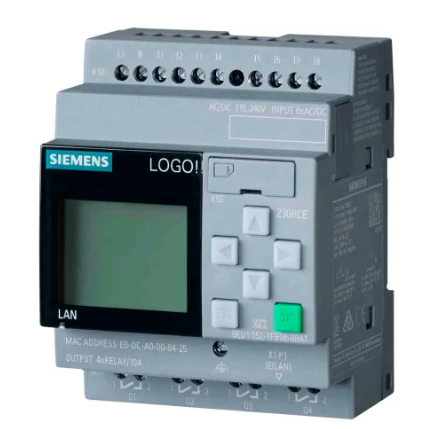Posted on 21st Dec 2022

PLC is an acronym for Programmable Logic Controller. PLCs are generally industrial computers used for controlling different electro-mechanical procedures in the manufacturing sector, industrial plants, or other automation settings.
PLCs differ in size and shape factors. Some are very little to fit in our pocket while others are very big, often need strong racks to mount. PLC’s can also be customizable with backplanes and functional modules so that they can easily match various types of industrial applications.
PLCs are broadly used in different industries due to their speed, ease of operation, and ease of programming. From ladder logic to particularly personalized programming languages of BASIC and C, PLCs can be programmed in various ways.
Most PLCs nowadays use one of the five programming languages such as Structured Text, Ladder Diagram, Function Block Diagram, Sequential Function Charts, or Instruction List.
HMI systems and SCADA allow users to view data from the industrialized floor and offer an interface for users to give control input — and PLCs are the most important hardware component element available in these systems.
It works like the physical interfaces between devices on the manufacturing floor or plant and an HMI System or SCADA. PLCs communicate, check, and control automated procedures such as machine functions, assembly lines, or robotic equipment.
The functions of PLC Control Panel is divided into three major categories such as inputs, outputs, and the CPU. By checking inputs that machines and devices are linked to, PLCs generally capture data from the plant floor. The CPU process this input data based on the input state. After that, the CPU carries out the user-made program logic and outputs data or commands to the devices it is linked to.
Conventionally, communication of PLCs takes place by the poll-response method. Generally, in local manufacturing settings, this kind of communication way is completely fine, as the communication distances are small and mainly hardwired. PLCs are continuously communicated with to confirm any data changes with poll-response.
With extensive use of the Industrial Internet of Things (IIoT), the need for data from remote locations also increases. This interprets to more computing devices and PLCs at the network's edge. Edge devises communication includes long distances wherein cellular networks are used more often. Because of poll-response communication's high frequency, the cellular network would sustain a very high cost.
Nowadays modern PLCs use modern communication protocols, heritage PLCs that are yet at the network's edge need extra hardware to bring them up to pace. MQTT broker and Ignition Edge IIoT, which are edge gateways pull data from heritage PLCs using poll-response and then spread the data utilizing publish-subscribe protocol.
This architecture of IIoT permitS industrial organizations to develop IIoT solutions on top of brownfield systems that can improve bandwidth usage. Also, it makes PLC data from the network's edge broadly available throughout the association.
The industry carries on to see new products making an entry in the market. The industrial automation products range from PACs (Programmable Automation Controllers) that merge the PLCs functionality with top-level PC functionality all the way to manufacturing embedded hardware.
Even though these new products are available, PLCs still are very popular due to their usefulness, affordability, and simplicity.